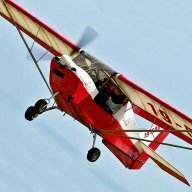Agreed ... or as I'd put it: "with all the variables at play in take-off performance, our sense of normal can be confused ..."
And, to paraphrase Nev, with P-charts, it's garbage-in/garbage-out. To me that says a backstop rule is handy.
True, but I don't think the video really misses that point. Gryder stresses that a sick engine is only one of several possible causes of unexpected poor acceleration and his 50/70 rule of thumb is meant to catch them all. And, as you say (and the video, too), it's only good as a last line of defence. Nobody denies that stopping immediately anything seems wrong is the way to (not) go.
And sure, in the real world, like taking off at Mt. Hotham on a hot summer's day (P-calcs duly done), having a backstop rule-of-thumb to counter "inaccurate feelings" might help. Even - turning it the other way - to prevent a dangerous reject situation which was never, in fact, necessary. (Visions of a cliff-hanger ;- )
Also, you might say that this video demonstrated a case where pulling it off the ground may well have improved the situation. According to the pilot's story, the alternative could have been plowing into the school pick-up event unfolding in front of him. Of course, he's the first to agree that an early reject was what was called for - if only he'd learned 50/70 earlier, he reckons.
But yes,, as Dan G says in the video, actually living to tell such a tale is not at all common.








